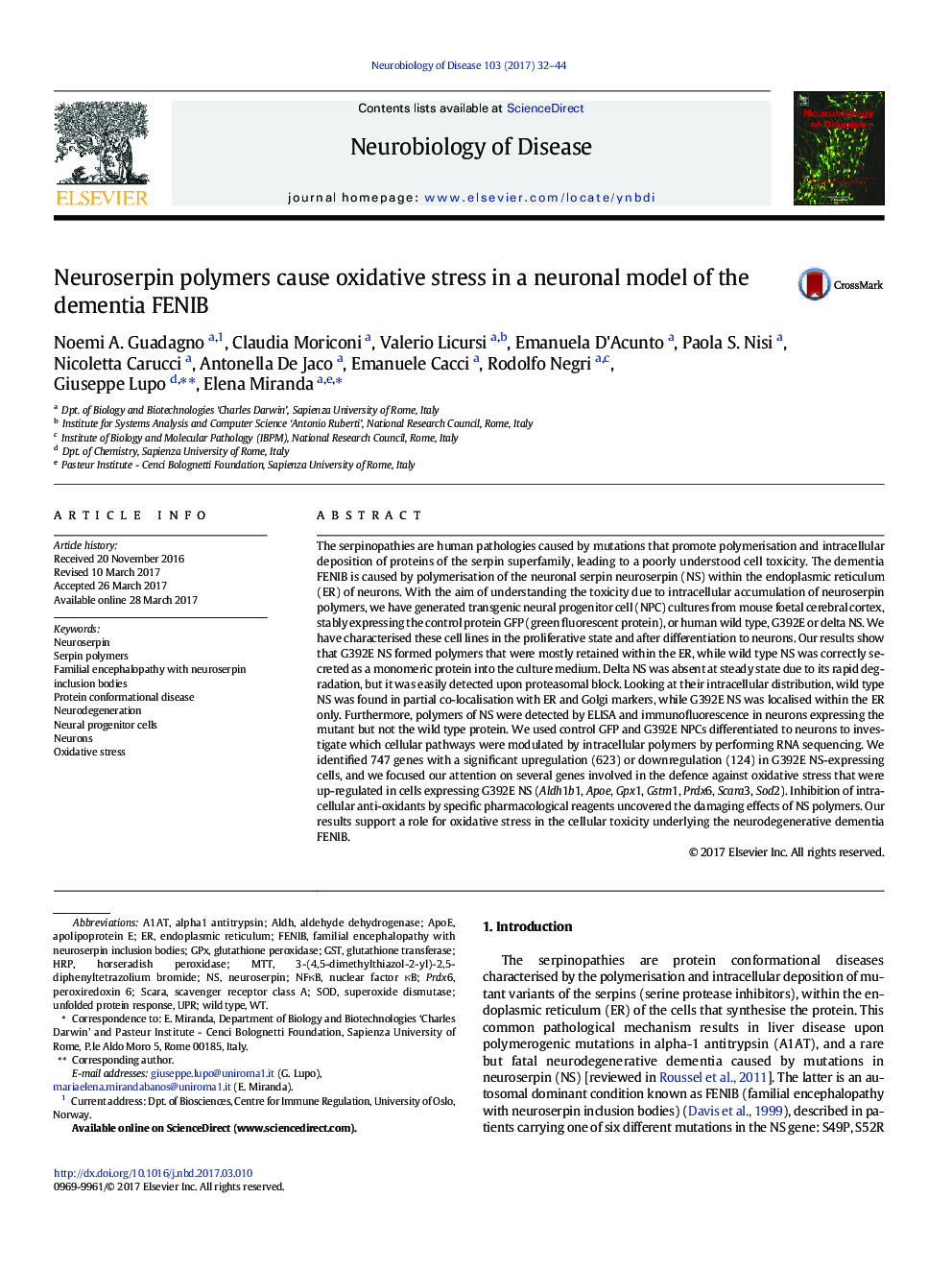| کد مقاله | کد نشریه | سال انتشار | مقاله انگلیسی | نسخه تمام متن |
|---|---|---|---|---|
| 5630612 | 1580618 | 2017 | 13 صفحه PDF | دانلود رایگان |

- A cell model system for FENIB was generated using mouse neural progenitor cells.
- Cells expressing polymerogenic neuroserpin upregulated several anti-oxidant genes.
- Inhibition of the anti-oxidant defences led to apoptosis of these cells.
- Oxidative stress and lipid oxidation may contribute to neurodegeneration in FENIB.
The serpinopathies are human pathologies caused by mutations that promote polymerisation and intracellular deposition of proteins of the serpin superfamily, leading to a poorly understood cell toxicity. The dementia FENIB is caused by polymerisation of the neuronal serpin neuroserpin (NS) within the endoplasmic reticulum (ER) of neurons. With the aim of understanding the toxicity due to intracellular accumulation of neuroserpin polymers, we have generated transgenic neural progenitor cell (NPC) cultures from mouse foetal cerebral cortex, stably expressing the control protein GFP (green fluorescent protein), or human wild type, G392E or delta NS. We have characterised these cell lines in the proliferative state and after differentiation to neurons. Our results show that G392E NS formed polymers that were mostly retained within the ER, while wild type NS was correctly secreted as a monomeric protein into the culture medium. Delta NS was absent at steady state due to its rapid degradation, but it was easily detected upon proteasomal block. Looking at their intracellular distribution, wild type NS was found in partial co-localisation with ER and Golgi markers, while G392E NS was localised within the ER only. Furthermore, polymers of NS were detected by ELISA and immunofluorescence in neurons expressing the mutant but not the wild type protein. We used control GFP and G392E NPCs differentiated to neurons to investigate which cellular pathways were modulated by intracellular polymers by performing RNA sequencing. We identified 747 genes with a significant upregulation (623) or downregulation (124) in G392E NS-expressing cells, and we focused our attention on several genes involved in the defence against oxidative stress that were up-regulated in cells expressing G392E NS (Aldh1b1, Apoe, Gpx1, Gstm1, Prdx6, Scara3, Sod2). Inhibition of intracellular anti-oxidants by specific pharmacological reagents uncovered the damaging effects of NS polymers. Our results support a role for oxidative stress in the cellular toxicity underlying the neurodegenerative dementia FENIB.
96
Journal: Neurobiology of Disease - Volume 103, July 2017, Pages 32-44